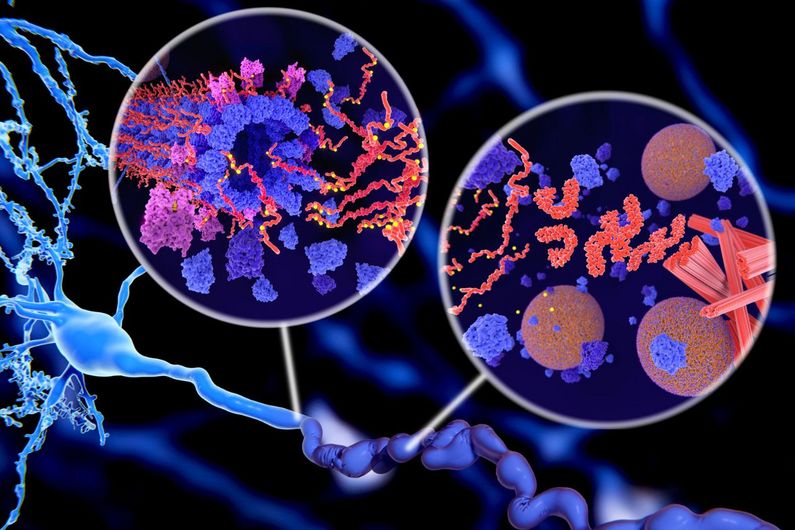Looking at tau and its role in Alzheimer’s
- UdeMNouvelles
01/18/2024
- Béatrice St-Cyr-Leroux
Medical professor Jonathan Brouillette discusses the protein's accumulation in the brain – and its promise as a new therapeutic target.
The effects of Alzheimer’s disease are devastating: not being able to recognize loved ones, losing precious memories, losing the ability to perform simple tasks, suffering through mood swings, and so on. And not only memory and cognition are affected; so, too, are physical functions such as the ability to walk and swallow food.
By 2030, an estimated one million Canadians will be living with Alzheimer’s or some other neurocognitive disorder. So it’s a race against time as researchers around the world work to identify effective treatments. And in that race, some are pinning their hopes on tau, a protein whose accumulation in the brain is associated with the onset of Alzheimer’s.
In a literature review published last summer in Frontiers in Neuroscience, Jonathan Brouillette, an associate medical professor in Université de Montréal’s Department of Pharmacology and Physiology, provided an update on knowledge of the role of tau in the neurodegeneration associated with Alzheimer’s.
We asked him to tell us more about his findings.
What is the tau protein doing in the brain, exactly?
The tau protein is very important in the brain because it stabilize the microtubules in the neurons. These tiny hollow tubes are dynamic structures that lengthen and retract depending on the need for plasticity in the neural network, for example during learning. They are also essential for the transport of essential substances to different parts of the neuron. By maintaining the integrity of these microtubules, tau proteins keep the neurons healthy.
What role does tau play in Alzheimer’s disease?
In Alzheimer’s, the tau protein is abundant and abnormally phosphorylated in the neurons. This hyperphosphorylation prevents tau proteins from binding normally to the microtubules. Instead, they clump together to form what are known as neurofibrillary tangles, blocking the transport system and eventually killing the neurons.
How do tau proteins spread in the brain?
It has been shown that tau proteins spread to different regions of the brain in a well-defined pattern, mainly from the entorhinal cortex to the hippocampus at the onset of Alzheimer’s. But we don’t yet know precisely how they spread.
Three models have been proposed as predictors for tau spread: the structural model – the proteins spread between connected brain regions; the functional model – they spread during the activation of connected regions; and the proximity model – they are released by neurons and diffuse to other neurons in the same region.
I believe it’s a combination of all three mechanisms but that neuronal activation is particularly important.
Would you say that research in this field is making advances?
Yes, we’re making good progress. Until a few years ago, we could only make a formal diagnosis of Alzheimer’s by performing a histopathological analysis of the brain after the person died. Now, thanks to positron emission tomography (PET) imaging, we can detect tau neurofibrillary tangles and amyloid plaques, the two signature markers of Alzheimer’s, in the brains of living individuals.
In our lab, we are trying to better understand the mechanisms underlying the spread of tau proteins. One of our projects, in collaboration with a team at Concordia University, is testing a mathematical model in an animal to predict variables such as the speed and direction of the spread of tau.
If we understand how the process works, we’ll be better able to identify molecules that can block the spread, or at least impede it, which could slow the progression of Alzheimer’s. Slowing it by just two years would generate enormous benefits for individuals and society as a whole: it would mean that about 34 per cent of people living with Alzheimer’s would no longer require care in a nursing home. The social costs would be greatly reduced.
Are you confident this will happen one day?
Yes, the question is not if, but when. With each new breakthrough in research, we are slowly but surely building up our toolkit. We’re seeing more and more research on new molecules targeting beta-amyloid and tau proteins, and we now know that interventions aimed at tackling modifiable risk factors, such as diet, physical activity, smoking and diabetes, could reduce the incidence of dementia by 40 per cent.
It’s a bit like triple therapy in AIDS treatment: by acting on several factors, we will be able to significantly impact the disease.














